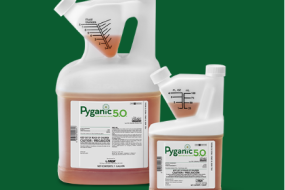If you’re a goat owner, you’re probably well aware of how rewarding it is to care for these charming animals. However, like any livestock, goats can fall victim to various diseases, one of which is Caprine Arthritis Encephalitis, commonly known as CAE. In this article, we’ll delve into what CAE is, its causes, symptoms, prevention, and treatment, so you can ensure the health and happiness of your goat herd.
Also, Read>>>> What Are The Causes, Symptoms, and Prevention of Infectious Bursal Disease (Gumboro)
What is Caprine Arthritis Encephalitis (CAE)?
Caprine Arthritis Encephalitis, or CAE, is a viral disease that primarily affects goats. It’s caused by a retrovirus belonging to the Lentivirus family. CAE is a persistent infection, meaning once a goat contracts the virus, it remains with them for life. While the virus itself may not cause immediate severe illness, it can lead to various health issues over time.
Causes of Caprine Arthritis Encephalitis (CAE) in Goats:
The primary mode of CAE transmission is through body fluids such as milk, blood, and colostrum. The virus can be spread from an infected doe to her kids during birth or through the consumption of infected milk. Additionally, CAE can also be transmitted through contaminated needles or equipment used during tattooing or disbudding procedures.
Symptoms of Caprine Arthritis Encephalitis (CAE) in Goats:
Identifying CAE in your goat herd can be challenging, as symptoms may not appear until several years after infection. Common clinical signs of CAE include:
- Arthritis: Goats with CAE may develop chronic joint inflammation, leading to lameness and reduced mobility.
- Encephalitis: Some goats may experience neurological symptoms such as muscle weakness, trembling, and difficulty walking.
- Mastitis: Infected does can develop udder infections, which may result in decreased milk production and poor udder health.
- Weight Loss: CAE-infected goats may lose weight gradually over time, despite a healthy appetite.
- Respiratory Issues: In some cases, goats with CAE may exhibit coughing and respiratory distress.
It’s important to note that not all goats infected with CAE will display these symptoms, making regular testing and monitoring crucial.
Also, Read>>>> What Are The Causes, Symptoms, and Prevention of Infectious Bursal Disease (Gumboro)
Prevention of Caprine Arthritis Encephalitis (CAE):
Preventing CAE is essential for maintaining a healthy goat herd. Here are some key strategies to reduce the risk of CAE transmission:
- Testing and Culling: Regularly test your goats for CAE, and cull any positive individuals from the herd to prevent further spread.
- Separate Infected Goats: Isolate goats that test positive for CAE to prevent them from infecting healthy animals.
- Pasteurize or Heat-Treat Milk: Heat-treating colostrum and milk can help destroy the CAE virus, reducing the risk of transmission to kids.
- Maintain Hygiene: Ensure proper sanitation of equipment and facilities, especially during procedures involving needles and blood contact.
- Avoid Shared Nursing: Prevent kids from nursing on infected does, as this is a common mode of transmission.
Treatment of Caprine Arthritis Encephalitis (CAE):
Unfortunately, there is no cure for CAE once a goat is infected. Therefore, prevention is the best approach. However, supportive care can help manage symptoms and improve the quality of life for affected goats.
- Pain Management: Goats with arthritis may benefit from pain-relieving medications prescribed by a veterinarian.
- Proper Nutrition: Ensure that infected goats receive a balanced diet to maintain their overall health.
- Isolation: Keep infected goats separate from the rest of the herd to prevent further transmission.
- Hydration: Provide ample clean water to help goats stay hydrated and cope with the effects of the disease.
- Consult a Veterinarian: Always consult with a veterinarian for guidance on managing CAE-infected goats.
Conclusion:
Caprine Arthritis Encephalitis is a concerning disease that can affect the well-being of your goat herd. By understanding its causes, symptoms, and prevention strategies, you can take proactive steps to protect your goats from this viral threat. Regular testing, good hygiene practices, and proper herd management are essential for ensuring the health and longevity of your goats. Stay vigilant, and your goat herd will thrive for years to come.
Also, Read>>>> What Are The Causes, Symptoms, and Prevention of Infectious Bursal Disease (Gumboro)











